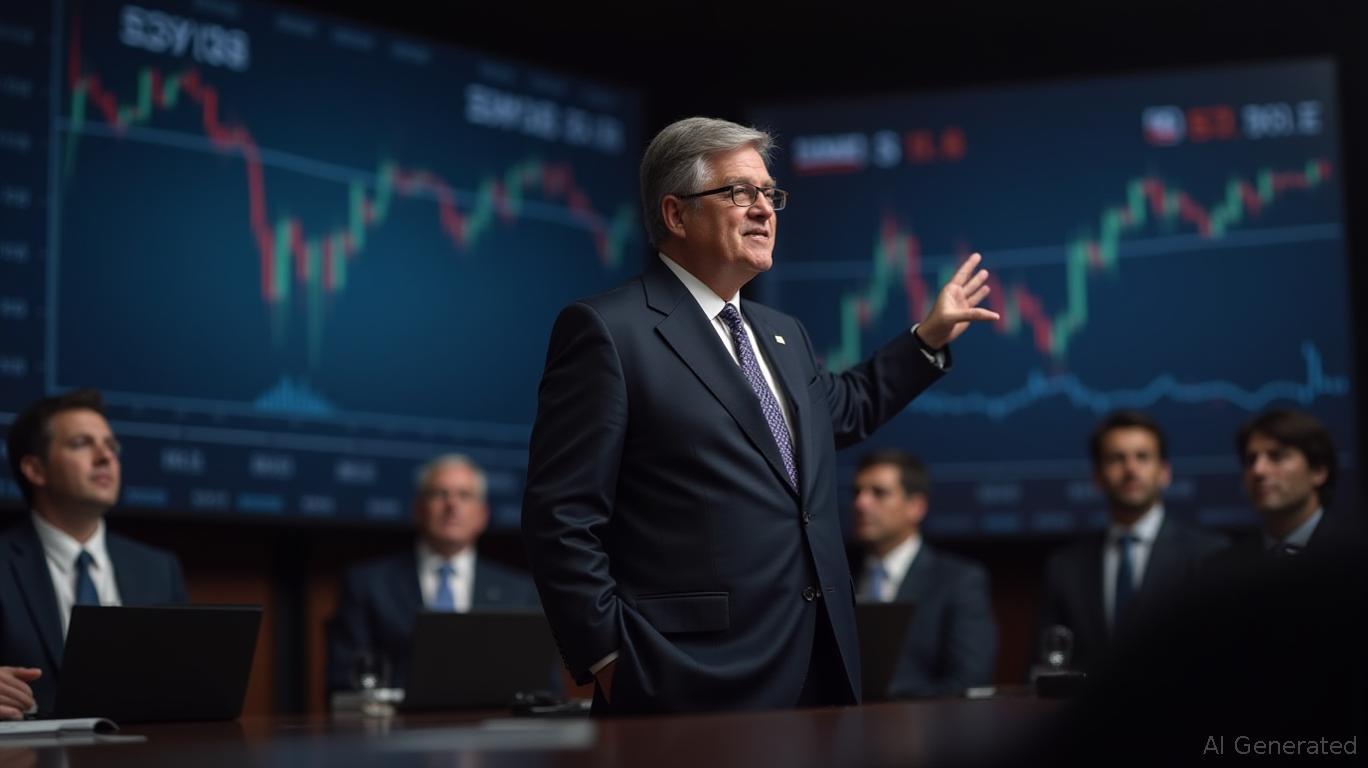Ethereum News Update: Crypto’s Political Bet: Trump’s Clemency and $263M in Lobbying Fuel Regulatory Ambiguity
- Ethereum led $522M in crypto liquidations as ETF inflows ($246M) surpassed Bitcoin for first time, signaling institutional adoption shifts. - Crypto groups spent $263M lobbying 2026 U.S. elections, doubling 2024 efforts, while Trump's Binance pardon boosted XRP, ETH, and BTC prices. - Trump Organization's crypto income surged 17-fold to $864M via token sales, raising ethical concerns amid UK money laundering probes into linked partners. - CLARITY Act faces 20% passage chance by 2026 deadline despite clos
Within the 24 hours ending on October 29, 2025, the global cryptocurrency market experienced liquidations totaling $522 million.

The uptick in ETF activity reflects a broader pattern of political and regulatory shifts influencing the industry. Crypto advocacy groups have assembled a $263 million fund for the 2026 U.S. midterm elections, nearly twice their 2024 expenditure and exceeding the lobbying budgets of the oil and gas sector, as reported by
At the same time, the
Despite these shifts, regulatory ambiguity remains. Bipartisan lawmakers are working to pass the CLARITY Act before a February 2026 deadline, as reported by
Amid these changes, the recent wave of liquidations underscores the dangers of leveraged trading. Ethereum’s leading role in liquidations—driven by its price falling to $4,010—illustrates the persistent challenges of volatility management, as Coinotag highlighted. Nevertheless, projects such as Blazpay are leveraging the current momentum.
As the industry continues to navigate evolving regulations, political dynamics, and market trends, the balance between institutional investment and speculative trading is expected to shape the course of 2026.
Disclaimer: The content of this article solely reflects the author's opinion and does not represent the platform in any capacity. This article is not intended to serve as a reference for making investment decisions.
You may also like
Bitcoin Updates: Fed’s Softer Stance Supports Both Economic Expansion and Inflation—Positive Momentum for Crypto
- The U.S. Federal Reserve cut rates by 25 bps to 3.75%-4.00% on October 29, 2025, ending quantitative tightening by December 1, easing liquidity constraints. - Crypto markets initially dipped post-announcement but gained analyst support as lower rates and weaker dollar historically boost Bitcoin and Ethereum as hedges. - Institutional crypto demand remained strong with Coinbase reporting 2,772 BTC inflows and Bitcoin ETFs seeing net inflows, while Tether's USDT supply surpassed $183 billion. - The Fed's "

Bitcoin News Update: Bitcoin Rally Drives $2.8B in Gains While Strategy's Shares Drop 15% Year-to-Date
- Strategy Inc. (MSTR) reported $2.8B Q3 2025 net income from Bitcoin's $70.6B portfolio (640,808 BTC) amid $20B unrealized gains. - New fair value accounting rules enabled profit recognition without selling Bitcoin, reversing $340M 2024 losses and boosting operating income to $3.9B. - CEO Phong Le targets $34B operating income if Bitcoin hits $150K, while $20B 2025 capital raises expanded holdings by 40,000 BTC. - Despite 51.74% BTC gains, shares fell 15.15% YTD due to dilution concerns, contrasting with

MEV's Tendency to Centralize Poses a Challenge to the Fundamental Principles of DeFi
- MEV (Maximal Extractable Value) destabilizes DeFi markets by enabling miners/validators to reorder transactions for profit, imposing a "hidden tax" on retail traders through front-running and sandwich attacks. - Aditya Palepu highlights systemic risks: 80% of MEV costs fall on retail users, while institutions avoid DeFi to mitigate front-running risks, undermining market liquidity and stability. - Trusted Execution Environments (TEEs) encrypt transactions pre-execution to block front-running, but vulnera

MEV Takes Advantage of DeFi Transparency, Triggering Concerns Over Fairness
- MEV exploits blockchain transparency to reorder transactions, creating a "hidden tax" that deters institutional DeFi adoption and harms retail users. - Sandwich attacks and front-running cost retail investors up to 80% of MEV-driven losses, with 24% of Ethereum blocks affected annually. - Trusted execution environments (TEEs) emerge as a solution by privatizing transaction data, potentially unlocking $trillions in institutional capital. - Experts warn MEV centralizes power and inflates costs, requiring g
